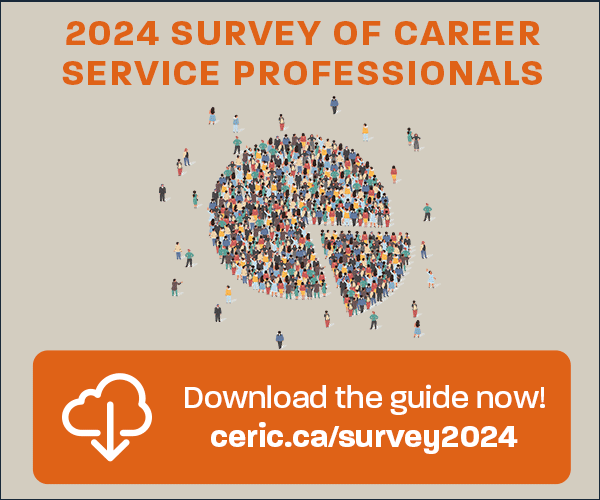Women's Career Decision-Making After Brain Injury
Keywords:
women, career decision, brain injury, decision makingAbstract
The career development and counselling literature has not included disability within the framework of diversity (Whiston & Breichesen, 2002) and has especially ignored women with isabilities (Flores et al., 2003). Consequently, the career development of women with disabilities is at an early phase of inquiry (Noonan et al., 2004) with no extant studies on the career development of women with acquired brain injury (ABI). Thus the purpose of this study was to give women with disabilities a greater priority in career research and to elucidate the career decision-making experiences of women with ABI. The social model of disability, which treats disability and normality as socially constructed statuses (Gill, Kewman, & Brannan, 2003), and positive psychology (Duckworth, Steen, & Seligman, 2005) served as frames for the study.
References
Amundson, N. E. (1998). Active engagement: Enhancing the career counselling process. Richmond, British Columbia, Canada: Ergon.
Blustein, D. L. (2001). Extending the reach of vocational psychology: Toward an inclusive and integrative psychology of working. Journal of Vocational Behavior, 59, 171- 182.doi:10.1006/jvbe.2001.1823
Brain Injury Association of Canada. (2011, April 14). NHCC and BIAC Key messages. Retrieved April 14, 2011, from http://biac-aclc.ca/en/?s=brain +injury+statistics
Bujold, C (2004). Constructing career through narrative. Journal of Vocational Behavior, 64, 470-484. doi:10.1016/j.jvb.2003.12.010
Canadian Institute for Health Information (2006 August). Head injuries in Canada: A decade of change (1994-1995 to 2003-2004): Analysis in Brief. Ottawa, Ontario: Author. Retrieved on April 14, 2011 from http://www.cihi.ca
Chamberlain, D. J. (2006). The experience of surviving traumatic brain injury. Journal of Advanced Nursing, 54(4), 407-417. doi:10.1111/j.1365-2648.2006.03840.x
Cochran, L. (1997). Career Counselling: A narrative approach. Thousand Oaks, CA: Sage.
Colaizzi, P. F. (1978). Psychological research as the phenomenologist views it. In R. S. Valle & M. King (Eds.), Existential–phenomenological alternatives for psychology (pp. 48-71). New York: Oxford University Press.
Collin, A. (1997). Career in context. British Journal of Guidance & Counselling, 25, 435-447. doi:10.1080/03069889708253822
Conyers, L. M., Koch, L. C., & Szymanski, E. M. (1998). Life-span perspectives on disability and work: A qualitative study. Rehabilitation Counseling Bulletin, 42, 51-
Retrieved from http://rcb.sagepub.com/
Duckworth, A. L., Steen, T. A., & Seligman, M. E. P. (2005). Positive psychology in clinical practice. Annual Review of Clinical Psychology, 1, 629-651. doi:10.1146/annurev.clinpsy.1.102803.144154
Fleminger, S., Oliver, D. L., Williams, W. H., & Evans, J. (2003). The neuropsychiatry of depression after brain injury. Neuropsychological Rehabilitation, 13, 65-87.
doi:10.1080/09602010244000354
Flores, L. Y., Scott, A. B., Wang, Y-W., Yakushko, O., McCloskey, C. M., Spencer, K. G., et al. (2003). Practice and research in career counseling and development-2022. TheCareer Development Quarterly, 52, 98-131. Retrieved from http://associationdatabase.com/aws/NCDA/pt/sp/cdquarterly
Gelatt, H. B. (1989). Positive uncertainty: A new decision-making framework for counseling. Journal of Counseling Psychology, 36, 252- 256. doi:10.1037/0022-0167.36.2.252
Gill, C. J., Kewman, D. G., & Brannon, . W. (2003). Transforming psychological practice and society: Policies that reflect the new paradigm. American Psychologist, 58,
-312. doi:10.1037/0003-066X.58.4.305
Golden, T. P., Smith, S. A., & Golden, J. H. (1993). A review of current strategies and trends for the enhancement of vocational outcomes following brain injury. Journal of Rehabilitation, 59, 55-60. Retrieved from http://www.nationalrehab.org/website/pubs/index.html
Hein, S. F., & Austin, W. J. (2001). Empirical and hermeneutic approaches to phenomenological research in psychology: A comparison. Psychological Methods, 6, 3-17.
doi:10.1037/1082-989X.6.1.3
Kroger, J. (2000). Identity development: Adolescence through adulthood. Thousand Oaks, CA: Sage.
Lent, R.W., Brown, S.D., & Hackett, G. (2000). Contextual supports and barriers to career choice: A social cognitive analysis. Journal of Counseling Psychology, 47, 36-49. doi:10.1037/0022-0167.47.1.36
Levack, W., McPherson, K., & McNaughton, H. (2004). Success in the workplace following traumatic brain injury: are we evaluating what is important? Disability and
Rehabilitation, 27, 290-298. doi: 10.1080/09638280310001647615
McMahon, M. (2005). Career counseling: applying the systems theory framework of career development. Journal of Employment Counseling, 42, 29-38. Retrieved from http://www.employmentcounseling.org/ Journal-of-EmploymentCounseling.aspx
Millis, S. R., Rosenthal, M., Novack, T. A., Sherer, M., Nick, T. G., Kreutzer, J. S., et al. (2001). Long term neuropsychological outcome after traumatic brain injury. Journal
of Head Trauma Rehabilitation, 16, 343-355. doi:10.1097/00001199-200108000-00005
Mitchell, K. E., Levin, A. S., & Krumboltz, J. D. (1999). Planned happenstance: Constructing unexpected career opportunities. Journal of Counseling and Development, 77, 115-124. Retrieved from http://www.counseling.org/Publications/Journals.aspx
National Institutes of Health. (1998). Rehabilitation of persons with traumatic brain injury. National Institutes of Health Consensus Statement Online 1998 Oct. 26-28,
(1), 1-41. Retrieved August 6, 2010 from http://consensus.nih.gov/1998/1998TraumaticBrainInjury109html.htm
Nochi, M. (1998). Struggling with the labeled self: People with traumatic brain injuries in social settings. Qualitative Health Research, 8, 665-681. doi:10.1177/104973239800800507
Noonan, B. M., Gallor, S. M., HenslerMcGinnis, N. F., Fassinger, R. E., Wang, S., & Goodman, J. (2004). Challenge and success: A qualitative study of the career development of highly achieving women with physical and sensory disabilities. Journal of Counseling Psychology, 51, 68-80. doi:10.1037/0022-0167.51.1.68
Osborne, J. W. (1990). Some basic existential-phenomenological research methodology for counsellors. Canadian Journal of Counselling, 24, 79-91. Retrieved from
http://www.ucalgary.ca/ucpress/journals/CJC/index.html
Patton, M. Q. (1990). Qualitative evaluation and research methods (2nd ed.). Newbury Park, CA: Sage.
Patton, W., & McMahon, W. (1999). Career development and systems theory: A new relationship. Pacific Grove, CA: Brooks/Cole.
Peavy, V. R. (1996). Constructivist career counselling and assessment. Guidance & Counseling, 11, 8-14.
Phillips, S. D. (1997). Toward an expanded definition of adaptive decision-making. Career Development Quarterly, 45, 275-287. Retrieved from http://associationdatabase.com/ aws/NCDA/pt/sp/cdquarterly
Power, P. W., & Hershenson, D. B., (2003). Work adjustment and readjustment of persons with mid-career onset traumatic brain injury. Brain Injury, 17, 1021-1034. doi: 10.1080/0269905031000110526
Prigatano, G. F. (2005). Therapy for emotional and motivational disorders. In W. M. High, A. M. Sander, M.A. Struchen, & K. A. Hart (Eds.), Rehabilitation for traumatic
brain injury (pp. 118-130). New York: Oxford University Press.
Ragnarsson, K.T. (2006). Traumatic Brain Injury research since the 1998 NIH consensus conference: Accomplishments and unmet goals. Journal of Head Trauma Rehabilitation, 21, 379-387. doi:10.1097/00001199-200609000-00002
Richardson, M. S., (2000). A new perspective for counsellors: from career ideologies to empowerment through work and relationship practices. In A. Collin & R. Young
(Eds.), The future of career (pp. 197-211). New York: Cambridge University Press.
Rush, B. K., Malec, J. F., Brown, A. W., & Moessner, A. M. (2006). Personality and functional outcome following traumatic brain injury. Rehabilitation Psychology, 51, 257- 264. doi:10.1037/0090-5550.51.3.257
Secrest, J.A. & Thomas, S. P. (1999) Continuity and discontinuity: The quality of life following stroke. Rehabilitation Nursing, 24, 240-246. Retrieved from http://awebsource.com/ clients/arn/ws_resource/public_index.php
Snyder, C. R., Lehman, K. A., Kluck, B., & Monsson, Y. (2006). Hope for rehabilitation and vice versa. Rehabilitation Psychology, 51, 89-112. doi:10.1037/0090-5550.51.2.89
Steadman-Pare, D., Colantonio, A., Ratcliff, G., Chase, S., & Vernich, L. (2001). Factors associated with perceived quality of life many years after traumatic brain injury. Journal of Head Trauma Rehabilitation, 16, 330-342. doi:10.1097/00001199-200108000-00004
Szymanski, E. M. (2000). Disability and vocational behavior. In R. G. Frank & T. R. Elliot (Eds.), Handbook of rehabilitation psychology (pp. 499-517). Washington, DC: APA.
Van Manen, M. (1990). Researching lived experience: Human science for an action sensitive pedagogy. London, ON: Althouse.
Vickery, C. D., Gontkovsky, S. T., & Caroselli, J. S. (2005). Self-concept and quality of life following acquired brain injury: A pilot investigation. Brain Injury, 19, 657-665. doi:10.1080/02699050400005218
Wehman, P., Targett, P., West, M., & Kregel, J. (2005). Productive work and employment for persons with traumatic brain injury. Journal of Head Trauma Rehabilitation, 20(2), 115-127. doi:10.1097/00001199-200503000-00001
Wertz, F. J. (2005). Phenomenological research methods for counseling psychology. Journal of Counseling Psychology, 52, 167-177. doi:10.1037/0022-0167.52.2.167
Whiston, S. C., & Brecheisen, B. K. (2002). Practice and research in career counseling and development–2001. Career Development Quarterly, 51, 98-154. Retrieved
from http://associationdatabase.com/ aws/NCDA/pt/sp/cdquarterly
Williams, W. H., & Evans, J. J. (2003). Brain injury and emotion: An overview to a special issue on biopsychosocial approaches in neurorehabilitation. Neuropsychological Rehabilitation, 13, 1-11. doi:10.1080/09602010244000444

Downloads
Published
How to Cite
Issue
Section
License

This work is licensed under a Creative Commons Attribution-NonCommercial-NoDerivatives 4.0 International License.
















